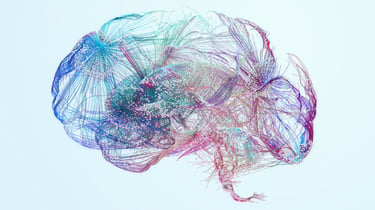eStoreRx™
Online Supplement Dispensary
eStoreRx™ is an easy direct-to-patient ordering & fulfilment program for lifelong wellness.
For over 40 years, Biotics Research Corporation has revolutionized the nutritional supplement industry by utilizing “The Best of Science and Nature”. Combining nature’s principles with scientific ingenuity, our products magnify the nutritional
eStoreRx™ is an easy direct-to-patient ordering & fulfilment program for lifelong wellness.
Biotics Research is proud to expand our commitment to education with the Wellness Unfiltered Pro Podcast. Each episode delves into key health topics and the clinical applications of our premier products. Through candid, insightful conversations, our team offers practical guidance to keep you informed and empowered as a healthcare professional.
December 18 2025
Low-carbohydrate diets are perhaps most popular for weight loss, but the strictest form of carbohydrate restriction – a ketogenic diet – has been show...
 Insights at the molecular level suggest that obesity may have neuronal origins in an area of the brain called the nucleus accumbens, giving us a new perspective on the causes of obesity.
Insights at the molecular level suggest that obesity may have neuronal origins in an area of the brain called the nucleus accumbens, giving us a new perspective on the causes of obesity.
Obesity takes a toll on virtually all body systems, and therefore on healthcare systems and medical costs for patients, and is a significant, growing threat to the world’s health in terms of prevalence. The prevalence of obesity among adults aged 18 years or older in the United States in 2017-2018 exceeded 40%.
To understand what drives people to overeat, scientists are looking more closely at a brain structure involved in motivation, reward, pleasure, and reinforcement learning called the nucleus accumbens (NAc). Previous studies on human and rodent models have shown that differences in the function of brain motivation centers, such as the nucleus accumbens (NAc), may contribute to overeating and obesity.
For example, obese-prone rats display increased excitability of NAc GABAergic medium spiny neurons and reduced expression of AMPA-type glutamate receptors. NAc GABAergic medium spiny neurons (MSNs) are a specific type of nerve cell located in the nucleus accumbens region of the brain. They are the most abundant cell type in this region and play a key role in regulating reward-related behaviors. GABAergic means that they release the neurotransmitter GABA (gamma-aminobutyric acid), which is the primary inhibitory neurotransmitter in the brain. However, little is known about the regulation of extracellular glutamate and GABA in the NAc of these models.
This recent study highlights significant differences in NAc glucose utilization and astrocytic recycling of glutamate in obesity-prone and obesity-resistant rats, which may contribute to differences in feeding behavior between the two groups. According to the research team, this mechanism could imply a defect in a neurotransmitter recycling process, typically maintained in the nervous system by star-shaped cells called astrocytes.
Normally, astrocytes remove glutamate from the synapse, convert it into glutamine, and transport it back to cells that produce GABA or glutamate. This sequence is critical for turning neurons on and off. The results suggest that there is an excess of glutamate that is not being removed from the synapse, indicating an imbalance between glutamate and GABA that affects brain activity differently in obesity-prone versus obesity-resistant rats.
This distinction between cause and effect in the area of obesity indictates that dynamics occurring at a molecular level could be a leading factor in the development of obesity.
Submit this form and you'll receive our latest news and updates.
The results of a randomized double-blinded and placebo-controlled trial examining the effect of medium-chain triglycerid...
Learn moreA recent study has shown that a green Mediterranean (green-MED) diet, high in polyphenols and low in red and processed m...
Learn more
*These statements have not been evaluated by the Food and Drug Administration. This product has not intended to diagnose, treat, cure, or prevent any disease.
Proposition 65 Warning
© 2025 Biotics Research Corporation - All Rights Reserved
Submit your comment